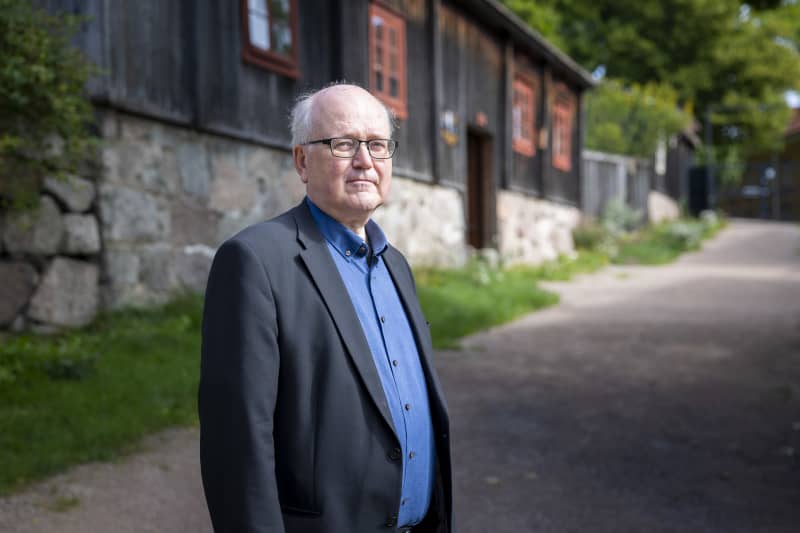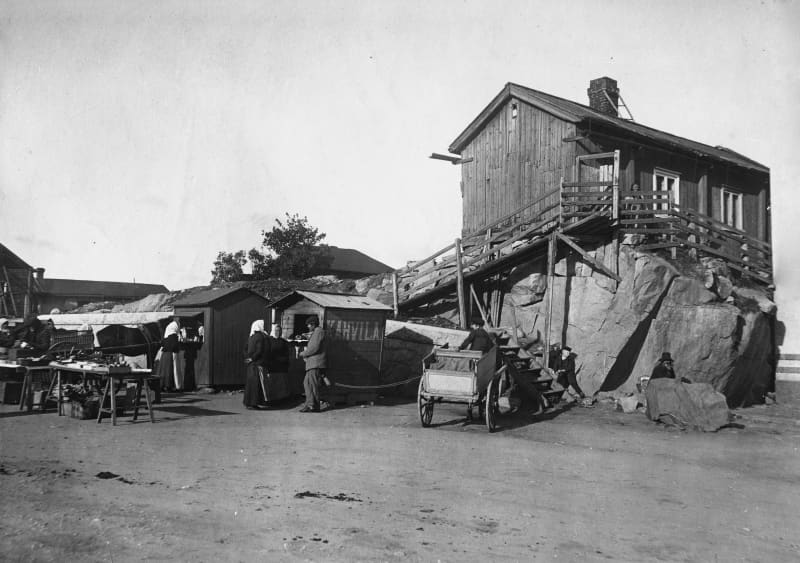There has not been a non-fiction book written about the fire in Turku for almost a hundred years. Now professor Hannu Salmi brings to the center the emotions of his contemporaries in the midst of the disaster: horror, sadness, guilt and compassion.
This is how the evening and night of the fourth day of September in 1827 appeared to those standing on Ryssänmäki in Turku, i.e. today’s Yliopistonmäki. It was a place where people were saved. It was also possible to observe the spread of the fire from there.
Hannu Salme was left with a niche: people had to be put in the middle of the disaster.
– I wanted to write about experiences and feelings. Although I tell events through people, I transport them within the limits of the sources. I haven’t invented anything, I’m alive.
He has had letters, diaries, memoirs, maps, pictures and newspapers as source material. He also got to know the religious and spirit books of the people chosen for his book.

The reasons why contemporaries’ experiences with fire are so close to Hannu Salme’s heart are clear. He was already interested in the history of disasters in the 1990s. The accident of the passenger ship Estonia may have contributed to that. He found it interesting how accidents were treated in the media.
– At the same time, I was also interested in the history of emotions, which was quite new at the time. The book \”Atomipommi kuuhun\” dealt with the mental history of technology, feelings and wishes related to technology.
The feelings are also related to the fact that Salme’s first memory of the Turku fire is based on a public school environmental education book. Although the book was black and white and modest, the impressive description of the fire stuck in my mind.
– I also had dreams about how the sky is red and the city is burning, Salmi reveals.
Topelius brought a nasty aftertaste to the history of the fire in Turku
Let’s go back 195 years, to the evening of the fourth day of September. The sun has just set.
The hostess sees the fire first. Dark smoke rises from the roof of the barn where dry hay is stored.
According to the life books, 33 people lived in Hellman’s house at the time. There were wage earners, but also tenants. Mrs. Hellman was the first and central witness in the interrogations.
He assured that the fire was not caused by the negligence of anyone living in the house. A spark from the chimney of a neighboring house had traveled to the barn’s roof.
The spark is a reasonable explanation, because at that time the Aninkainen area was built in such a way that the height differences were considerable even between adjacent houses.
– The chimney of one house could end at the height where the neighboring house started, Hannu Salmi says.

The fire safety risk had been well known, but the city had not reacted to it. It is clear from the documents of the magistrate that the merchant Hellman had already tried to influence the conditions on Aninkaistenmäki on several occasions.
In particular, he had complained about the widow Harvelin’s house, which was on the north side of Hellman’s plot, and whose chimney occasionally emitted soot smoke. Hellman would have liked to expand the lot and buy more land from the city for that purpose.
The first rumors on the streets of Turku told about the carelessness of the service people. And when contemporaries believed this, the information also spread to newspapers.
– Endless guilt must have weighed on the minds of those who lived in the house, Salmi reflects.
– It is a sad side note in the history of the fire in Turku, Salmi states.
The tenacious myth of the maid’s tallow soup has lived on until these days. Salmi has come across it, for example, in a quiz question.

The author of the book _Tuneiden palo – Turku liekein 1827_ is sure that the residents felt a huge relief when they took an oath in the October trial that they were not responsible for the fire. In the end, the Kämner Court concluded that the fire started from a spark flying from the chimney.
The topic of discussion in refugee camps: Why did I survive?
Nobody who saw the flames of the Turku fire could hardly have imagined at the time that it was the largest urban fire in the Nordic countries, which was reported as far as the United States and Australia. Hannu Salmi calls the fire the first Finnish media event.
There was so much to tell. At the time of the fire, there were 14,000 inhabitants in Turku, 11,000 of whom lost their homes. Most of the city’s building stock was destroyed.
It was even more amazing that very few people perished in the ruins. After the fire, only 17 deaths were counted.
– Fire was considered God’s punishment. Many wondered why he himself survived the accident. Or why he himself had to suffer, Hannu Salmi says.
There was then time to think about these in the refugee camps that sprung up around the city: Rehtorinpello, Kupittaankent and Vartiovuori. From there, from the coldness of autumn, people escaped little by little to the countryside or to the hotels of their friends.
Before the fire, Turku had been the flourishing center of Finland – both in terms of intellectual life and trade.
There were both rich and poor people in the refugee camps. Hannu Salmi says that little food was distributed and the boundaries between social classes disappeared for a while in the disaster.
– In the refugee camps, solidarity and compassion were felt, helping others. The majority of the population was, of course, poor people who lost everything.
– Two hundred years after the fire, he was still singing it, and the words were written down. The song had lived in people’s mouths until the time of TV culture.
Hannu Salmi hopes that his book will influence the preservation of memories related to the fire in Turku. There are still five years to think about how to honor the 200th anniversary of the fire.
_The text is based on an interview with Hannu Salme and his book Tunteiden palo – Turku liekeiäin 1827, which was published a week ago. The main image is a photo from 1910, where market trade is carried out at Aninkaistentor, at the current Sibeliuskatu 5. Photo: Turku Museum Center_
_You can discuss the topic with the Yle ID until September 5th at 11 pm._

